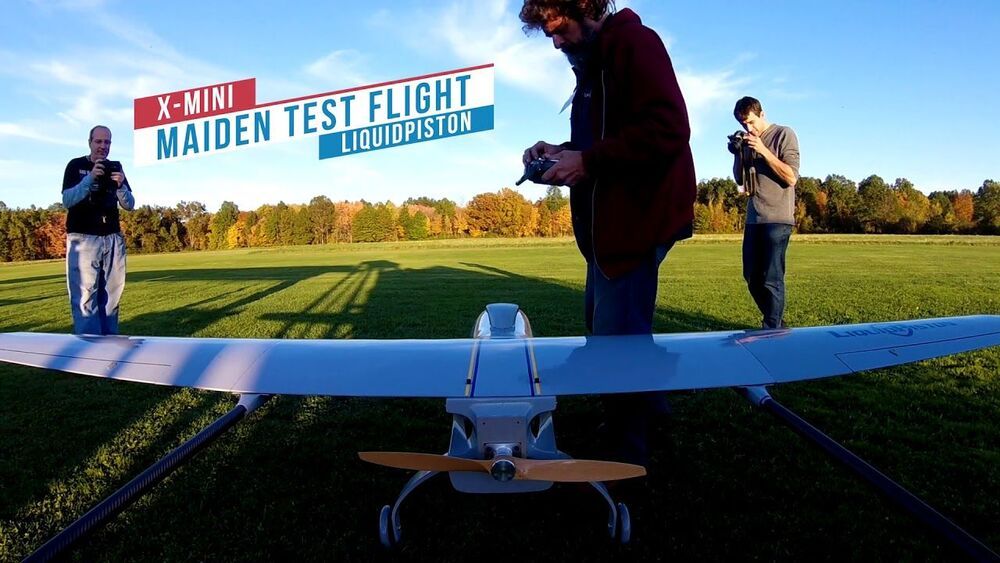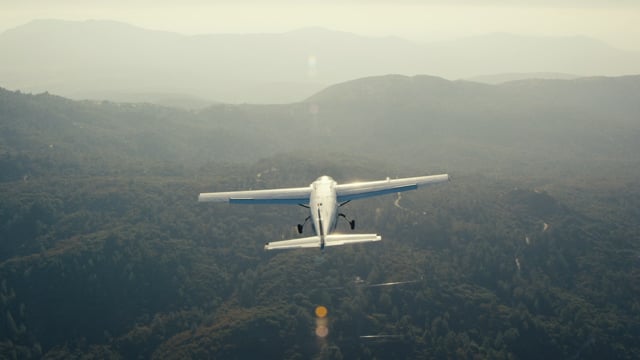Dec 18, 2020
US Air Force deploys first automated quadcopter for airbase security
Posted by Quinn Sena in categories: military, robotics/AI
The US Air Force has deployed its first automated unmanned air vehicle security system for an airbase.
The US Air Force has deployed its first automated unmanned air vehicle security system for an airbase.
“What we’re looking at now is not just an attack that is ongoing, that is not just highly sophisticated, but also we cannot trust the supply chain. We can no longer trust that any third-party application in these systems has not been compromised by Russia,” says NYT’s Nicole Perlroth.
Artificial intelligence helped co-pilot a U-2 “Dragon Lady” spy plane during a test flight Tuesday, the first time artificial intelligence has been used in such a way aboard a US military aircraft.
Mastering artificial intelligence or “AI” is increasingly seen as critical to the future of warfare and Air Force officials said Tuesday’s training flight represented a major milestone.
“The Air Force flew artificial intelligence as a working aircrew member onboard a military aircraft for the first time, December 15,” the Air Force said in a statement, saying the flight signaled “a major leap forward for national defense in the digital age.”
The Energy Department and National Nuclear Security Administration, which maintains the U.S. nuclear weapons stockpile, have evidence that hackers accessed their networks as part of an extensive espionage operation that has affected at least half a dozen federal agencies, officials directly familiar with the matter said.
On Thursday, DOE and NNSA officials began coordinating notifications about the breach to their congressional oversight bodies after being briefed by Rocky Campione, the chief information officer at DOE.
They found suspicious activity in networks belonging to the Federal Energy Regulatory Commission (FERC), Sandia and Los Alamos national laboratories in New Mexico and Washington, the Office of Secure Transportation at NNSA, and the Richland Field Office of the DOE.
Japan will build its next-gen fighter jet with the help of defense contractor Lockheed Martin. The unnamed fighter will be designed primarily to shoot down enemy planes, but will also have the ability to strike ground targets.
✈ You love badass planes. So do we. Let’s nerd out over them together.
The French military is starting exploratory work on the development of bionic supersoldiers, which officials describe as a necessary part of keeping pace with the rest of the world.
A military ethics committee gave its blessing to begin developing supersoldiers on Tuesday, according to The BBC, balancing the moral implications of augmenting and altering humanity with the desire to innovate and enhance the military’s capabilities. With the go-ahead, France joins countries like the U.S., Russia, and China that are reportedly attempting to give their soldiers high-tech upgrades.

Connecticut-based company LiquidPiston is developing a portable generator for the US Army that uses its X-Engine, a fresh and extremely powerful take on the rotary engine that’ll deliver as much power as the Army’s current-gen-set at one-fifth the size.
We’ve written a few times before about the fascinating LiquidPiston rotary engine. It’s not a Wankel – indeed, it’s closer to an inside-out Wankel – and with only two moving parts, it’s able to deliver extraordinary power density at up to 1.5 horsepower per pound (0.45 kg).
Continue reading “LiquidPiston’s ‘inside-out’ rotary X-Engine wins Army research contract” »
The flight marks the first known time an AI has to been used to control a US military aircraft.
“This is the first time this has ever happened,” assistant Air Force Secretary Will Roper told the newspaper.
The AI took care of some highly specific tasks and was never in control of actually flying the plane — or, notably, any weapon systems.

Now more than ever both the importance and limitations of the global delivery infrastructure are on full display. But while Amazon and others try to speed up last mile delivery using drones, Dash Systems hopes to expedite the middle mile — with military-inspired airdrops putting pallets of parcels down at their penultimate destinations, even in the most inaccessible of locations.
Air-based delivery generally consists of four steps. First, an item is taken from the warehouse to the airport. Second, it goes by well-packed large cargo planes from there to another major hub, say from New York to Los Angeles. Third, a truck or smaller plane takes these to their regional destination, a sorting or distribution facility. Fourth, they go out on the familiar delivery trucks and end up on your doorstep.
This article shares the results from an evaluation of a novel thermal imaging technology that took place before the initial implementation in a Pfizer manufacturing facility. The manuscript describes the technology and reviews the extensive process used to challenge its inspection capabilities through field testing. Finally, the potential benefits of adopting this first-in-class pharmaceutical technology as a new standard for non-destructive testing1, 2 of bottle induction sealing integrity in the pharmaceutical industry is summarised.
HIGH-RESOLUTION, cryogenically cooled thermal imaging technology was initially developed for military purposes. Furthering the commercialisation of the technology for civil applications, a pharmaceutical assembly – for high-speed and 100 percent inline verification of induction integrity in bottle packaging – was first developed and made available for testing relatively recently.3 This article summarises outcomes from initial plant feasibility work and extended rigorous proof-of-concept trials. The evaluation process resulted in the first Pfizer network implementation of the technology for the routine inspection of heat induction foil sealing integrity in a high‑speed bottle packaging line at a pharmaceutical manufacturing facility.
